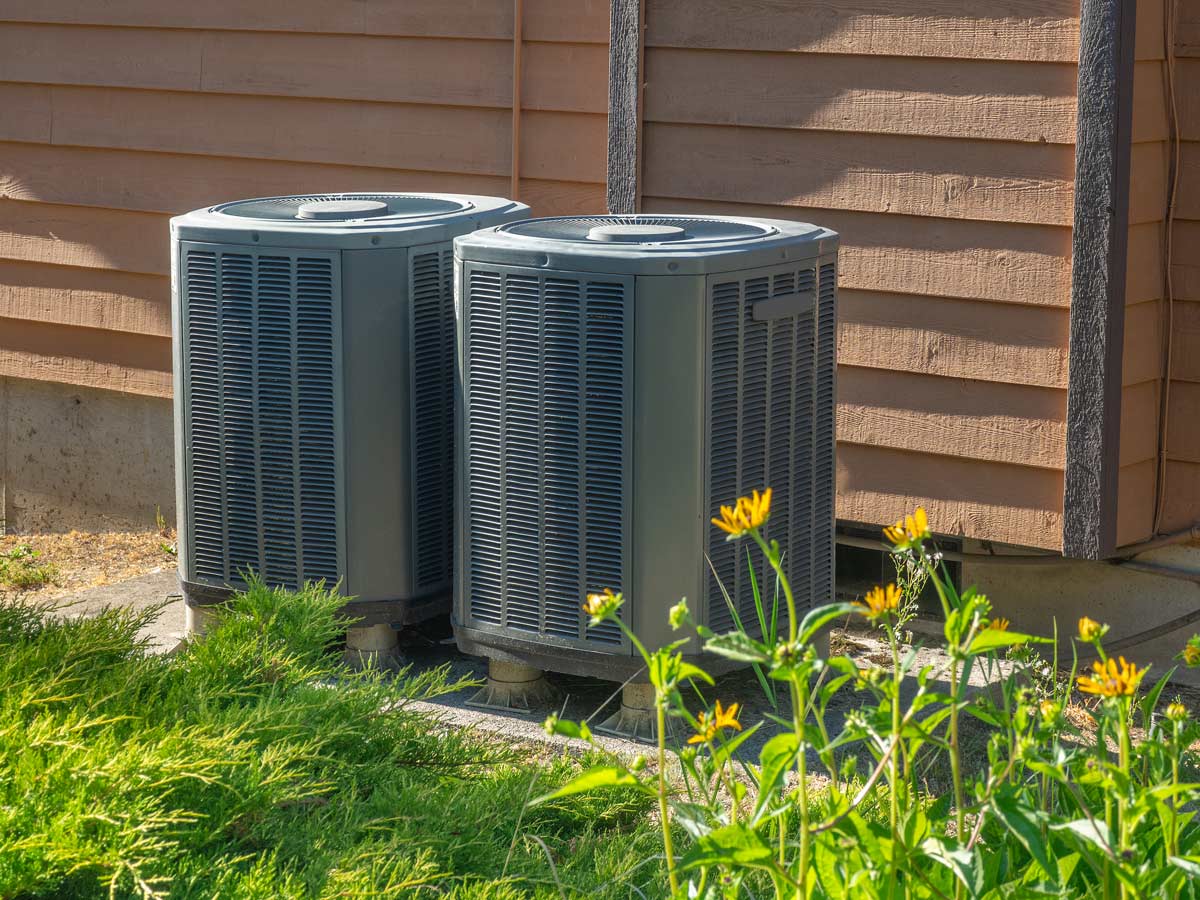
External HVAC threats can jeopardize the investment you’ve made in your home’s comfort and safety. While we associate cooling and heating with the indoors, certain parts of the system are exposed to outdoor risk factors. These external HVAC threats can affect system performance and efficiency, as well as reduce life expectancy of the unit. Outdoor HVAC components affected by potential damage include:
- Central AC components, including the compressor and condenser coil and fan installed in the outdoor unit behind or next to the house.
- A gas furnace vent terminating at the roof.
Here are potential external HVAC threats affecting these components during various seasons:
Flooding
Heavy rain can produce ground pooling that inundates the outdoor AC condenser unit. Submersion in water may ruin the compressor motor and other critical parts. The outdoor unit should be mounted on a pad that’s elevated above ground level. The ground surrounding the unit should be graded to divert water away.
Falling Objects
The central AC outdoor unit may be subject to damage from heavy falling objects, including large tree limbs. Keep tree limbs trimmed back to avoid impacting the unit in case of breakage during high winds.
Wildlife
Check the rooftop furnace vent annually to ensure that the vent cap is secure. Loose or missing vent caps may make the pipe a nesting place for birds, squirrels, or other critters. When the furnace is operating, animal nests and/or accumulation of fallen leaves can block proper furnace venting and allow dangerous carbon monoxide gas to enter the house.
Snakes, possums, raccoons, and other animals may attempt to enter the outdoor AC unit, posing external HVAC threats. These animals may chew internal wiring and cause expensive electrical damage, as well as accumulating nesting material that obstructs unit airflow. Make sure unit side panels and the top cover are securely attached to prevent animal intrusion.
For professional HVAC service, contact the experts at Jackson & Sons.